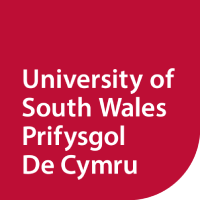Prof D Tudhope
No more applications being accepted
Funded PhD Project (European/UK Students Only)
About the Project
This PhD research project will investigate the integration of spatial and semantic information in the archaeology domain. This research combines two distinctive research areas at Glamorgan: the Hypermedia Research Unit and the GIS Research Centre. The supervisory team includes Douglas Tudhope, Director of Studies ([Email Address Removed]), Mark Ware ([Email Address Removed]).
This work will build on the previous AHRC funded STAR and STELLAR projects at Glamorgan, which made significant advances in semantic tools and techniques but where spatial data were out of scope. The spatial aspect is considered one of the key areas for future work. It is anticipated that the research will involve collaboration with outside organisations, including (amongst others) English Heritage (EH), the Archaeology Data Service (ADS) at the University of York, Ordnance Survey (OS).
The research team has been active in the application of semantic technologies to digital archaeology research. This involves mapping and extracting excavation data to ontologies, such as the CIDOC Conceptual Reference Model and Knowledge Organization Systems, such as thesauri and glossaries for Monument and Find types. However the integration of the spatial and semantic dimensions has proved problematic. Spatial coordinate data does not immediately lend itself to expression in RDF or OWL and it is not clear how to integrate GIS and semantic systems.
Recently work has begun to address this problem, including proposed extensions to the semantic web language SPARQL and spatial extensions to ontologies such as the CIDOC CRM. Various standards based approaches have been proposed by the Open Geospatial Consortium, including the OGC candidate standard semantic language GeoSPARQL. Efforts are underway to consider the appropriate spatial extension to the CIDOC CRM ontology and in particular a GeoSPARQL extension. The PhD work will seek to investigate approaches for modelling the integration of spatial and semantic archaeological data, extending the CIDOC CRM to take account of spatial data and investigating the potential of GeoSPARQL and other approaches.
Applicants should have significant software development skills/experience. Knowledge of semantic technologies and GIS will be an advantage. Awareness of digital archaeology will be an advantage but is not necessary.
Further information
http://hypermedia.research.glam.ac.uk/kos/star/
http://hypermedia.research.glam.ac.uk/kos/stellar/
http://intarch.ac.uk/journal/issue30/tudhope_index.html
http://www.opengeospatial.org/projects/groups/geosparqlswg/
Funding Notes
The studentship is open to UK and EU students.
The studentship will cover Home tuition fees at the Home fee rate, and will provide a stipend of £15,000 per annum (tuition fees apply).
For further information, please contact: Professor Doug Tudhope, e-mail [Email Address Removed]
Apply online: www.glam.ac.uk/research/centenary

 Continue with Facebook
Continue with Facebook

